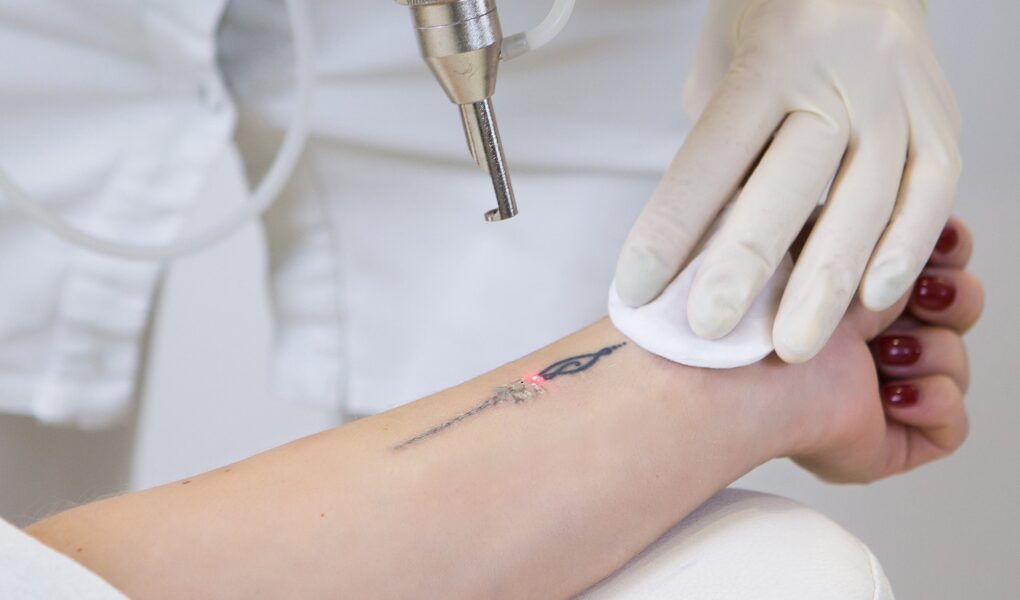Tattoo removal is a delicate process that requires the right method to achieve successful results. Laser removal is one of the most popular and widely used methods for tattoo removal, but other options such as surgical excision, dermabrasion, and chemical peels are also available. In this article, we will compare laser removal to other tattoo removal methods and help you determine which one is right for you.
Laser Tattoo Removal
Table of Contents
Laser removal works by breaking down the pigment in the tattoo ink using high-intensity light beams. The laser targets the tattoo ink while leaving the surrounding skin untouched. The body’s immune system finally eliminates the ink particles after they are absorbed into the bloodstream.
Laser removal is a popular method due to its effectiveness and low risk of scarring. It is also relatively safe for most skin types and colors. However, laser removal can cause discomfort during the session and may require multiple sessions for complete removal.
Surgical Excision
Surgical excision involves removing the tattooed skin tissue through surgical incisions. This method is typically reserved for smaller tattoos and may be performed under local anesthesia. Surgical excision can offer quick and immediate results, but it can also result in noticeable scarring.
The main drawback of surgical excision is that it requires a surgical procedure, which carries its own set of risks and potential complications. It may also not be effective for larger tattoos or those located in tricky areas.
Dermabrasion
Dermabrasion involves using a high-speed rotary device to remove the top layers of the skin, including the tattoo ink. This method is most effective for superficial tattoos and may require multiple sessions for complete removal.
Dermabrasion can cause discomfort and may result in temporary bleeding or scabbing. It can also be associated with a higher risk of scarring, particularly for individuals with darker complexions.
Chemical Peels
Chemical peels involve applying an acid solution to the skin to remove the top layers of the skin and the ink pigment. This method is most effective for superficial tattoos and may require multiple sessions for complete removal.
Chemical peels can cause discomfort and irritation, and may take several weeks to heal. It may also carry a high risk of scarring, particularly for individuals with darker skin.
Which Method is Right for You?
The best tattoo removal method for you depends on multiple factors, including your tattoo’s characteristics, your skin type, and preferences. Here are some of the key considerations:
Tattoo Size and Age: Laser removal tends to be most effective for medium to larger sized tattoos that are at least six months old. For smaller or newer tattoos, surgical excision or dermabrasion may be more suitable.
Tattoo Location: Certain areas of the body, such as the hands, feet, or face, may be more challenging to remove tattoos due to skin sensitivity or thinness. Laser removal is generally safe for most areas of the body, but surgical excision or dermabrasion may be more suitable for delicate areas.
Tattoo Color: Laser removal works best for darker colors, such as black or dark blue, but may not be as effective for lighter or bright colors such as green or yellow. In some cases, laser removal may require multiple sessions or combination treatments to effectively remove the ink.
Skin Type: Each tattoo removal method has its own considerations for different skin types. Laser removal is generally safe for most skin types, but individuals with darker skin may be more prone to hyperpigmentation or scarring. Surgical excision may be more suited for individuals with lighter skin tones, while chemical peels may be more effective for superficial tattoos.
Cost and Time: The cost of tattoo removal can vary depending on the method used and the number of sessions required. Laser removal tends to be more expensive but may require fewer sessions than other methods. Surgical excision, on the other hand, may offer quicker results but may require more downtime.
Conclusion
Choosing the right tattoo removal method requires careful consideration of various factors, including your tattoo’s characteristics, skin type, budget and time constraints, and personal preferences. Laser removal is often the most popular and effective method due to its high success rate and low risk of scarring, but other options such as surgical excision, dermabrasion, and chemical peels may be more suitable depending on the individual situation.
Consult with a dermatologist or specialist in laser tattoo removal in Dallas to evaluate your tattoo, assess your skin type, and discuss which removal method is most suitable for you. Remember to prioritize your safety and well-being throughout the process to achieve successful results.



